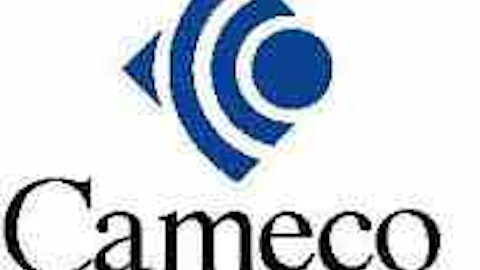What does Anatolia think of Temrezli at $55/lb uranium instead of the assumed $65/lb?
We’d enjoy a strong margin at $55/lb and higher. Looking at the sensitivity analysis in the PFS, Temrezli would have an NPV of ~US $135 million based on a $55/lb uranium price. This has the potential to be an exceptional project generating cash at virtually any uranium price.
Assuming the merger closes, when should readers expect a Feasibility Study at Temrezli incorporating the proposed relocated of the mill?
We expect to issue a JORC-compliant report early in 2016 from our ongoing technical work and are considering the appropriate report to deliver. We will be better able to discuss possible enhancements when a report is issued, rest assured the relocation of the Rosita plant remains part of the plan. Optimization also involves identifying and removing bottlenecks to enhance on-time on-budget construction and start-up.
Approximately when might Temrezli commence production? How long to ramp up to its capacity of 800k pounds per year? What about 1.6 million pounds?
Initial production is projected in late 2016 under Anatolia’s PFS. It could take up to two years to reach full production, peaking at over 1 million pounds per year. The 1.6 million pounds figure is the expansion potential of the Rosita plant. The PFS projects a 12-year mine life, providing URI time to conduct district exploration on properties like Sefaatti, quite near the Temrezli site.
Please describe the Company’s historical, non-compliant resources vs its NI 43-101 compliant resources.
We will build value for our shareholders from assets in our pipeline by advancing the development or monetizing assets to pull forward lower cost production opportunities. The merger with Anatolia does this. Our Texas and New Mexico projects, including our remaining processing plant in Texas, provide diversification and a large resource base leveraged to a rebound in the uranium price.
The Canada National Instrument 43-101 and the Australian JORC standards are recognized internationally. We are committed to JORC as the expanded URI will be listed on the Australian Stock Exchange, serving our new shareholders after the merger.
Since joining URI in 2013, our new management team has produced three independent NI 43-101 compliant reports for Roca Honda, Cebolleta and Juan Tafoya, all in New Mexico. Cebolleta is ready to advance to the next stage of a Preliminary Economic Assessment. The other reports recommended infill drilling at Cebolleta and Juan Tafoya to upgrade the resources to the Indicated category. We have an independent Feasibility report for the Churchrock Project in New Mexico that has federal permits for production of up to 3 million pounds.
URI has produced 8 million pounds of uranium in Texas. The Company shut production in 2009 as it was no longer economic. URI has reserves of 664,000 pounds contained within 419,000 short tons at an average grade of 0.08% in South Texas and non-reserve mineralized material of 118 million pounds of uranium in 39 million short tons at an average grade of 0.15% in New Mexico.
U.S. investors are cautioned that, “mineral resources” are not recognized and do not have economic support to demonstrate that the, “resource” can or ever will be converted to reserves.
Tell us more about the value of the existing URI pipeline while the uranium market has been in a slump.
In the past nine months we have done four transactions, rapidly reshaping Uranium Resources with near-term ISR production potential in Turkey and an improved mid-term production profile in the U.S. We divested our conventional underground Roca Honda Project in two strategic steps to pull forward our ISR production potential through the Butler Ranch and Alta Mesa Este projects in Texas.
Most recently, we purchased for $150,000, an historic data set for our Butler Ranch properties with a historic non-compliant resource estimate of 1.3 million pounds within 427,100 tons at an average grade of 0.15%. We also obtained geologic logs for over 2,000 exploration drill holes, maps and cross sections. That works out to about 10 cents per pound in acquisition costs.
